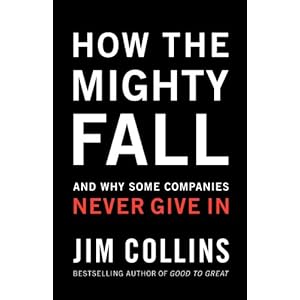[youtube=http://www.youtube.com/watch?v=afLq5dYFWK4&hl=en&fs=1&rel=0&border=1]
As an entrepreneurial spirited leader there is always something to do. There are more potential new accounts to call, people to hire, bankers to meet, and the list goes on and on. It reminds me of the plate spinners I would see when I was a child visiting the circus. They start spinning one plate, then two and before long they have 12 plates spinning on long staffs. Just as one more begins to spin, one of the previous plates need attention so they do not stop spinning and fall to the ground.
There are only two plates entrepreneurs can never let fall; your family and your values.
All the other plates can fall, and often will, and they bounce. If they break they can be glued back together again, adequately enough so they continue to spin.
The founder of Kaboodle put it another way at a recent TIE Arizona event; as an entrepreneur you are juggling a number of balls in the air, but two are made of glass and must never fall; your family relationships and your core values. If those balls fall they do not bounce, they shatter and can never be replaced.
Your Family
At the end of the day, your family is the only real relationship you have that truly matters. We justify the nights and weekends away from home telling ourselves it is for them. The truth, in my case (and maybe yours is) we work like we do for the “rush” the addictive thrill of solving customer problems.
It comes down to making choices. We fail to recognize we have a choice, but we do. I made bad choices over the years. I traveled for example domestically 3-4 nights per week for 15 years. In addition, when I was home on weekends, for two years I completed my Executive MBA. I used to describe myself back then as “focused”. I was focused all right, but on the wrong plates. Missed baseball games, dance recitals and anniversaries almost made my family plate fall. Couple my passion to grow businesses with an international expansion for three years being gone weeks at a time, my family plate almost fell. Today I find myself connecting someplace between Pacing the Cage as I discussed in a previous post and the popular cat’s in a cradle song.
It truly is about “focus”, “intentional focus” to be more precise. We set our priorities each day consciously or unconsciously . When I work with young entrepreneurs, once we have trust built I ask to see their day planner (today it’s often a phone) and their checkbook. These two simple tools very quickly show me an entrepreneur’s focus.
I recommend entrepreneurs consciously put dates and times on your schedule for family. I recommend you take notes, just as you do with key accounts, but at home when your daughter is sharing what is important to her, or when your wife needs her life partner to bounce ideas off of.
I have learned that no matter how much “money” your work can produce, nothing is more valuable than your family, and this plate must never fall.
Values
Your core values shape your outlook and your actions. Just last Sunday Pastor Jason was discussing how your;” beliefs shape your actions….so what do your actions say about your beliefs”
When I work with new clients one of the first things I need to understand is their values. I do not judge their values I just need to know what they are. Far too often they are not black and white, but land somewhere in the grayness due to compromises made. Values are at the core of you as a leader, and must be at the core of your business. Just as a strong core is essential to strong physical health, strong core values establishes boundaries. Some of my clients struggle with the idea of boundaries, I had one young man who took over the family business put it this way; “it sounds like you are asking me what the rules are…if I wanted rules I would not be working for myself, …I make the rules” and he could not have been farther from the truth.
I came to faith in the mid 1990’s in a program called Alpha. In this series of nights watching DVD’s in small groups and discussing our beliefs, the founder of Alpha, Nicky Gumble, tells a story. His son loves to play soccer. One day they arrived at the pitch and there were no officials, so Nicky was asked to fill in so the kids could get started and he agreed. So the ball would go out of bounds, but he would say play on. The players would make a foul and Nicky would say…play on. Before long the match was pandemonium with children being hurt, parents and children frustrated, and no one was having fun. When the referee finally arrived the first thing he did was blow his whistle. He reviewed the rules, established the boundaries, and play began. Nicky goes on to say how much the children actually enjoyed playing the game once they understood the rules and had firm boundaries.
In business we must also establish boundaries. What often occurs is not gross violations of core values, but small, minor compromises…often later justified as…”for the good of the team”. I have never seen those small compromises truly add long term value. I have seen companies short pay vendors, or purposefully pay their bills 45-60 days late thinking they were so clever to use their vendor’s cash to support their growth. However the vendors, if they have boundaries quickly shut down supply until you pay, or they increase your cost of goods to offset the cost of money. The net result always is your customers suffer.
I also see compromises with regards to key team members. A team member does behaviors that are unacceptable based on your company mission and core values…but company leaders look the other way because he or she…”produces”. They produce alright, they may be producing sales, or operational efficiencies or so on, but they also are creating a disruption at the core of what your team stands for. You see, everyone is watching when, let’s call him “Mark” is not living by the rules the team established. The longer Mark is allowed to play outside the boundaries established by your core values the weaker your team becomes internally and in your market. In addition to your team, your market is always watching as well. As I discussed in my post about the “Law of the Locker room” …it truly is a small world” Your market, like a neighborhood talks. I promise you they talk about you. You must insure what they say about you and your team helps grow your business and not make them seek more trusted partners.
Your core values as a leader and as an organization must be defined and they must establish clear boundaries.
Failure to do so and your team will make compromises and one day you may have a large company, but not like each other when you get there.
You can judge a leader much more by their walk, than by their talk. Their actions do illustrate their beliefs.
What do the actions of key leaders and influencers in your organization illustrate about your core values.
(And now the real hard one) What do your actions say about your core values and that of your organization?
As an entrepreneurial leader you will often feel like a plate spinner in a circus. You always have something you can be doing. For me I often felt like a “one legged plate spinner” trying do too much, too quick, and I had many sleepless nights over the plates in my mind that were almost ready to fall.
There are two plates you must never let fall, for once broken can never be fully repaired; your family and your values.
What are your core values and beliefs?
Are the right plates still spinning?
Technorati Tags: Entrepreneur best practices,entrepreneur,core values,spinning plates,values,beliefs,attitudes,leadership,market leader,boundaries,Alpha,compromises





